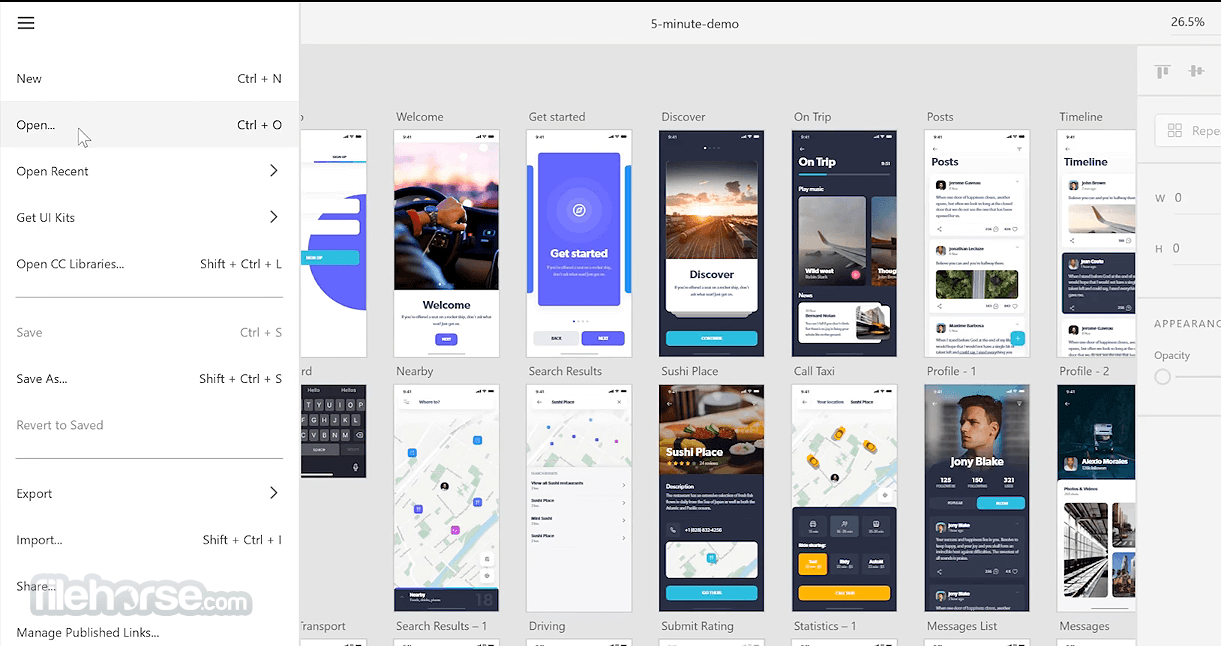

I have the iPhone layout and, rather than starting from scratch for the next layout my tablet layout Id like to duplicate this design and just resize the elements. Im here in Adobe XD and Im working on a few device-specific layouts for a page Im designing.


Go to Plugins > sign in the top menu to open the plugin directly, or click the plugin icon in the left sidebar and then click Maze.Open the XD prototype you'd like to import into Maze.Once the Maze plugin is installed, you can use it to generate an import link for each of your XD prototypes:
#Adobe xd responsive resize not working install#
Click the Install button to install the Maze plugin for Adobe XD. To solve this user problem, Adobe XD has developed a feature called responsive resize that allows you to resize objects while maintaining spatial relationships at different sizes to best adapt to multiple screen sizes.Click the Maze tile to bring up the plugin details.in the top menu to browse their plugin catalog or click the Plugins icon ( ) in the left sidebar and then click the + button. Im trying to vertically center a few elements (see image), the constraints Ive set seem correct but they dont accomplish the task. In Adobe XD, go to Plugins > Browse Plugins.You'll need to install our plugin in Adobe XD to use it with Maze. This document will walk you through installing the required plugin, generating that link, importing your prototype into Maze, and updating the prototype after you've imported it. Click “Export” on the lower right to complete the process.You can use your prototypes from Adobe XD in Maze for testing by installing our plugin and generating a prototype link that can be imported into Maze. Responsive Resize / Constraints not working Adobe XD adinu August 31, 2021, 2:15pm 1 I think there is a problem with the constraints. In the “Export SVG” dialog box, change the format type to “SVG” and tick on the “Optimize the File Size” box. When saving a file in Adobe XD, go to “File,” click “Export,” and then hit the “Selected” prompt in the drop-down menu. You can also use the “Fix Width” and “Fix Height” buttons to achieve a perfect resize. You can see this above the “Responsive Resize” tab. So go to the artboard toolbar on the right side pane and key in the sizes of your choice. If you want specific sizes for the image, you should adjust the width and length manually. Step 3: Specify the Dimensions You Want for the Project.After, you can start clicking and dragging the image to a size you want without distorting it and ruining its quality. Instead, go to the right side pane to enable the “Responsive Resize” feature. Doing so will make the design pixelated and awful. The drag-and-drop option in resizing does not work well on a responsive SVG file. Alternatively, you may drag the file into the XD artboard or just copy and paste it. However, you can always take the shortcut option by right-clicking on the file and selecting “Open With,” then “Adobe XD” from the drop-down menu. Tailwind UI is a collection of professionally designed, pre-built, fully responsive HTML snippets you can drop into your Tailwind projects. To open a responsive file in Adobe XD such as SVG, you simply need to head over to the “File” options menu and then go to “Import.” From there, browse over the folder where the file is located and select it to bring it up to the artboard.

It offers straightforward features for responsive SVGs while allowing you to design an interactive user interface at the speed of light. A few features make up Content-Aware Layout as it is today, and those include Responsive Resize, Padding, and Stacks. This feature leverages intelligence built into Adobe XD to detect relationships between objects on the canvas. Adobe XD is an incredible prototyping tool used in designing mobile apps and websites. Content-Aware Layout is a method of quickly creating smart layouts in Adobe XD.


 0 kommentar(er)
0 kommentar(er)
